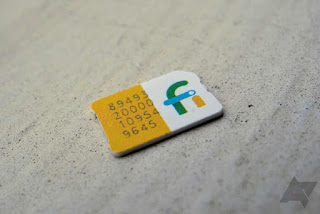Are you suffering from Qi envy? Do you wish you could charge your phone just by laying it down on a pad?
Sorry, that's only for owners of fancy, high-falutin' phones. If you want wireless charging, you'll have to buy new.Except,
no, you won't. I recently spent $13 for agizmo that adds wireless charging to nearly any Android phone. And you know what? It works! (If you're an iPhone owner, the same option applies:It's amazingly easy and affordable to add this capability to your existing phone.
How is that even possible?
Don't worry, you're not going to have to pry your case open and get crazy with a soldering iron. This is a plug-and-play solution. But, first, let's talk mechanics.Wireless (aka inductive) phone-charging dates back to 2012 and the HTC Droid DNA. Today, you can find the capability in about a dozen models, most of them from Motorola and Samsung.
But those phones were manufactured with Qi (pronounced "chee") receivers built in. Where does that leave the rest of us?
With a surprisingly simple, inexpensive and effective option: A razor-thin Qi receiver that sticks to the back of your phone. It does require full-time access to the micro-USB or Type-C port, but not at the expense of using your own case. Here's the result of my $13 experiment.
Is it really just $13?
Having tried this already with the aforementioned iPhone, I knew I could find Android-compatible Qi pads for about the same price. Sure enough, Amazon had this Nillkin Type C Wireless Charging Receiver for $12.99 -- one of many virtually identical products that sell under different brand names.(At press time, you could save 20 percent on the receiver by applying promo code ASNY7VIP at checkout -- bringing your total down to just $10.39. But inventory was limited.)
I chose a USB-C connector so I could test it with a Motorola Moto X4, but Nillkin offers Micro-USB versions for the same price. The only real requirement is that your phone's charging port be located bottom-center. A smattering of older and/or oddball phones might have it along one side, which wouldn't work.
One thing to note is the length of the ribbon cable.
Ultimately, you want the receiver to sit more or less in the center of your phone's backside. I opted for the "small" version of the Qi receiver, which was a perfect fit for the 5.2-inch Moto X4. I think only phablet owners would need a "large."
Any problems with it?
The receiver is barely thicker than a sheet of paper, so it adds no noticeable bulk or weight. It's designed to sit between your phone and your case, though there's a small 3M adhesive in the center of the pad if you typically go without a case. (I don't recommend this, because it's far too easy for the pad to get caught on something and ripped loose. Plus, it's not exactly a great look.)Speaking of cases, if you chose a clear one in order to maintain the aesthetic of your phone, obviously you're going to see the pad. And if it's an ultra-thin case, the slight bulge might prevent it from fitting properly.
I tested it with a black Spigen case, one I would describe as "medium thick." Charging worked as advertised -- I simply set the phone down on a Qi pad -- and the receiver didn't interfere with the fit of the case.
One thing to consider -- and this is true for any phone that uses wireless charging -- is that if you use a magnetic car-mount, the mounting plate will likely get in the way of the receiver. (Similarly, most phone-grippers, like the PopSocket or Spigen ring, will prevent your phone from laying flat, which is necessary for charging.)
Beyond that, there's only one real issue: It's difficult to remove the receiver's connector without first removing the case. How often will you need to do that? Depends how often you find yourself needing to charge via conventional cable. If you deploy Qi pads/stands on your desk, nightstand, dashboard, it may not be an issue at all.
My experience with the Nillkin Qi pad and a Moto X4: Very good. Your mileage may vary, of course, depending on the receiver you buy, the case you have, the charging pad you use and so on.
But for just $13 or so (plus the cost of at least one pad), this is a fun and affordable way to dip your toe into wireless-charging waters.














No comments:
Post a Comment